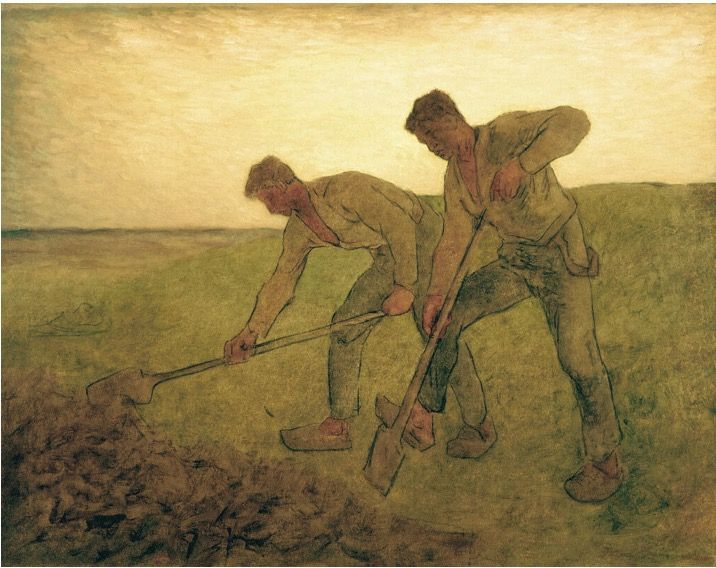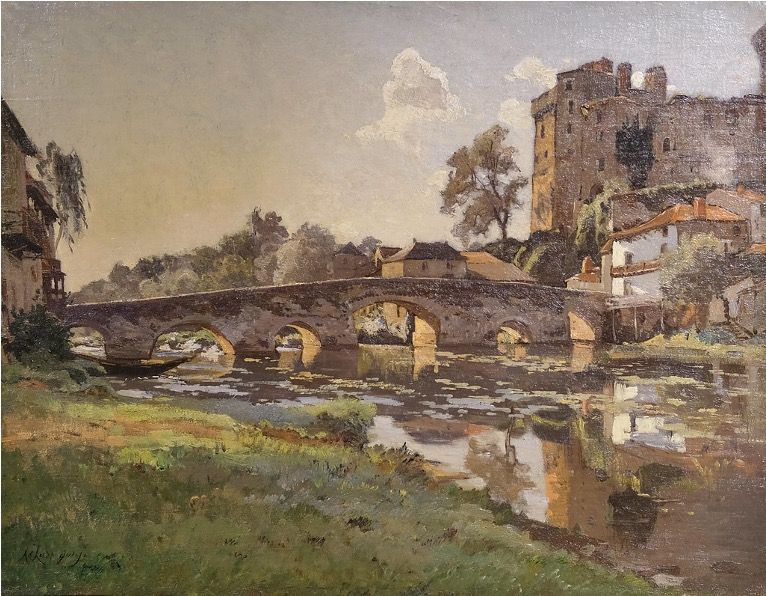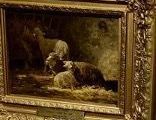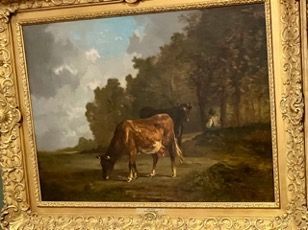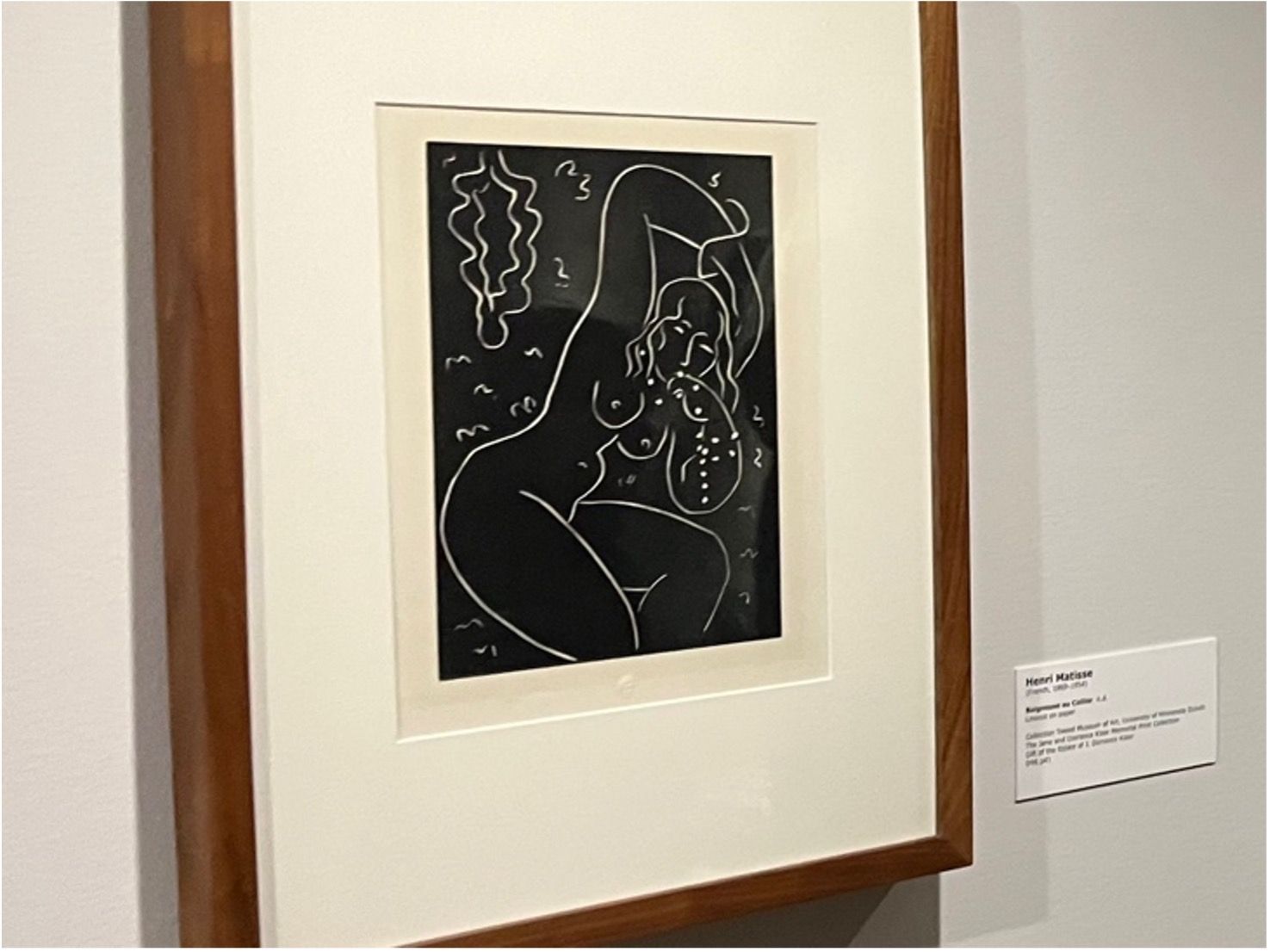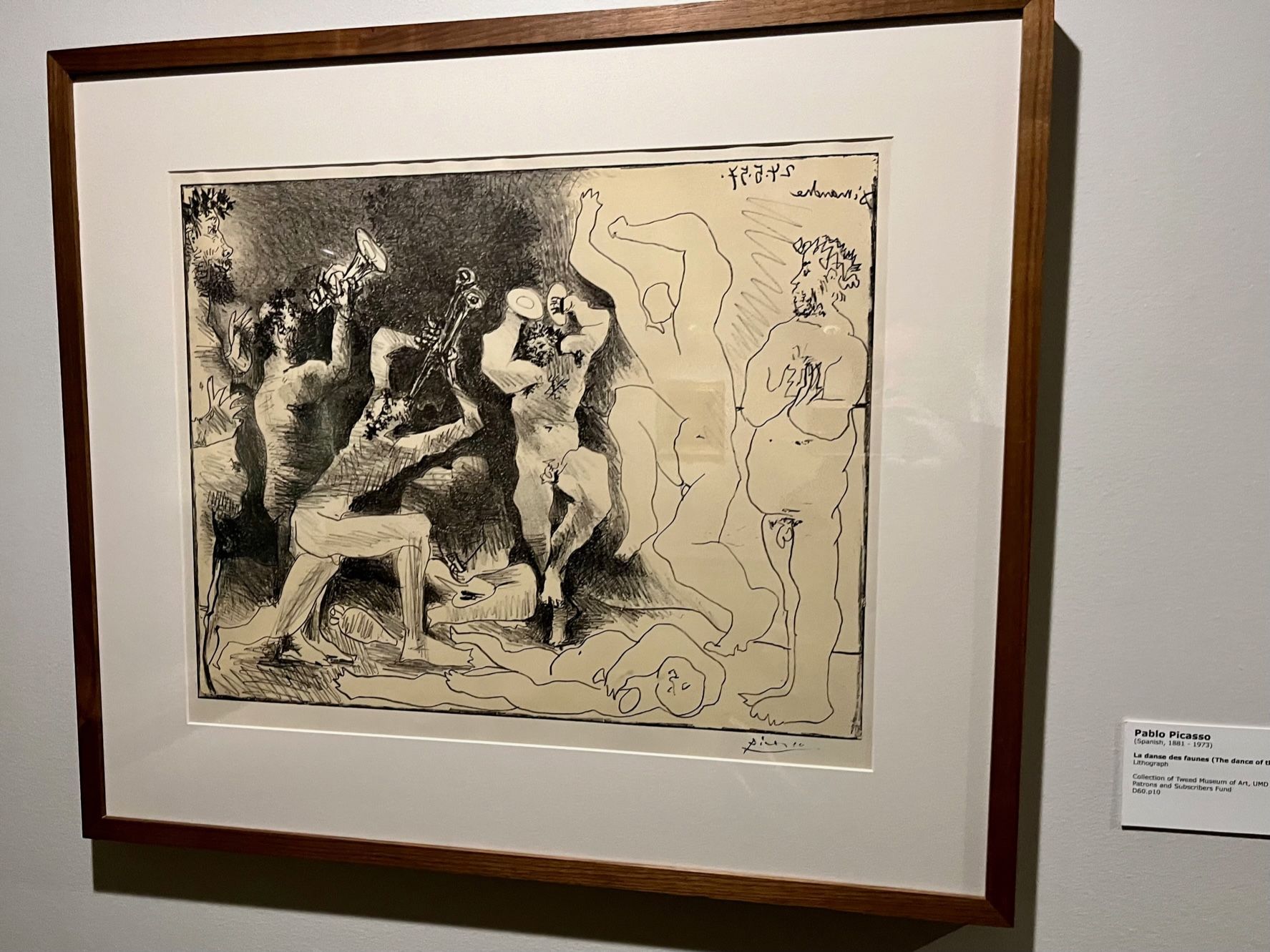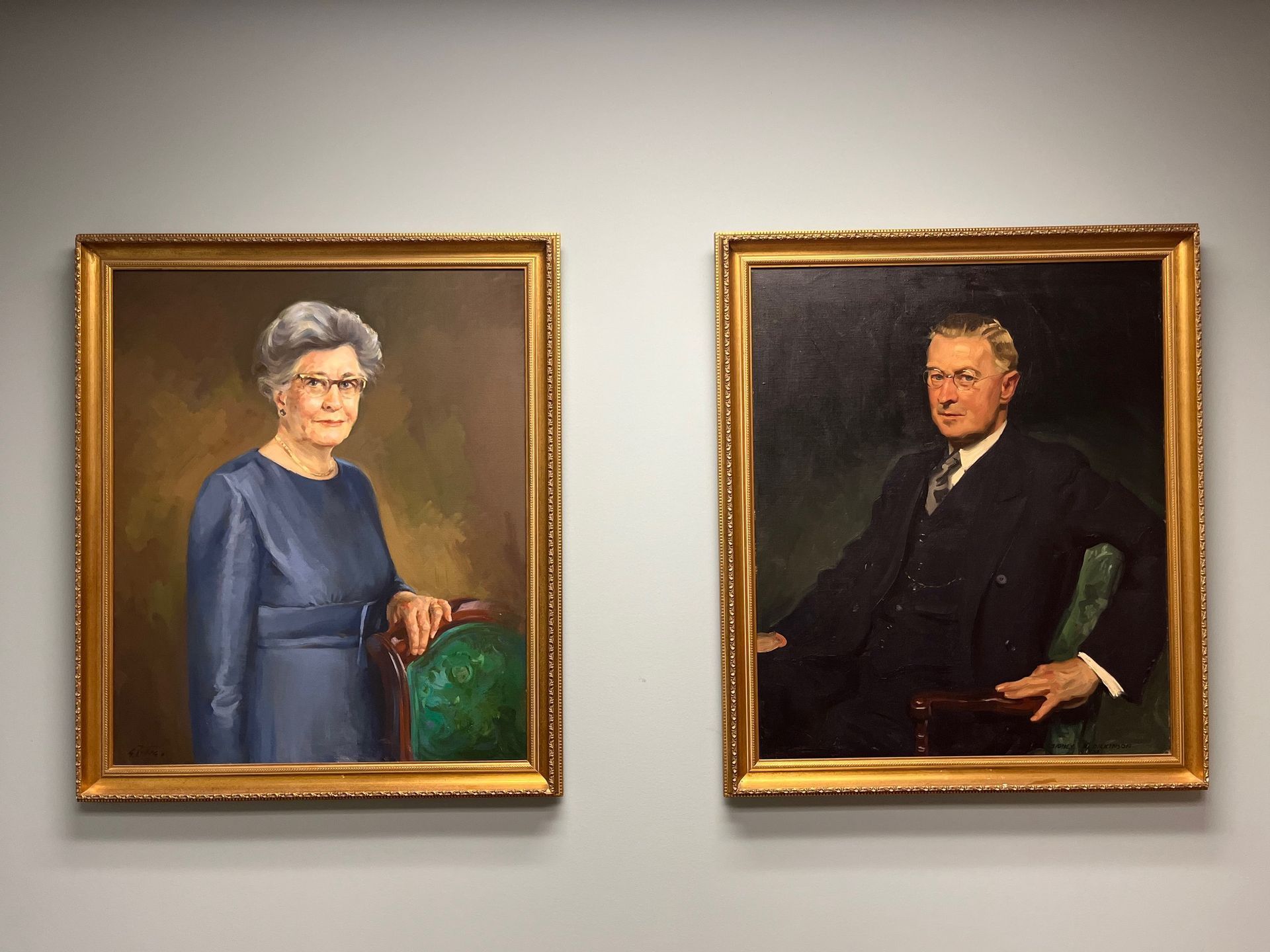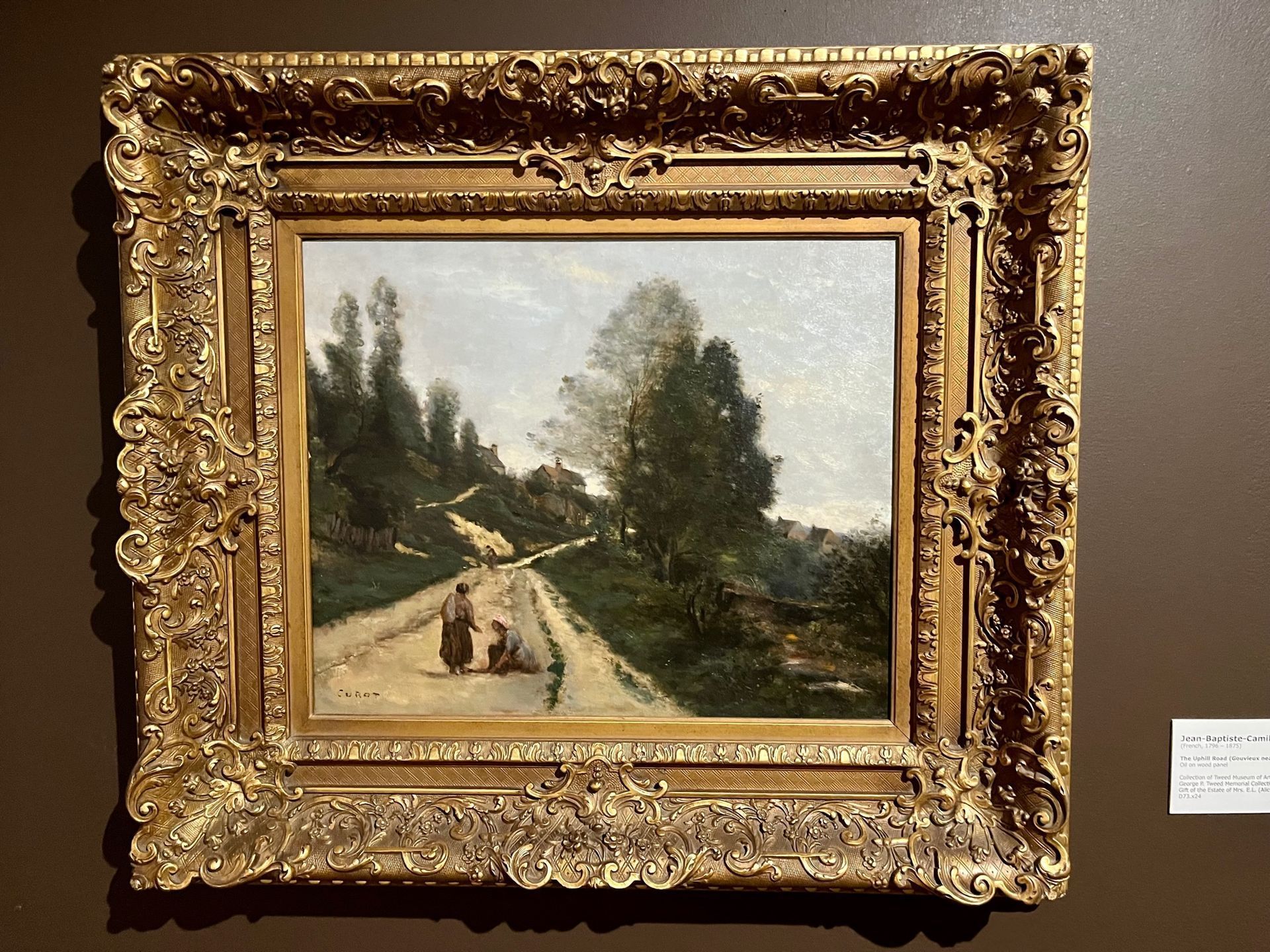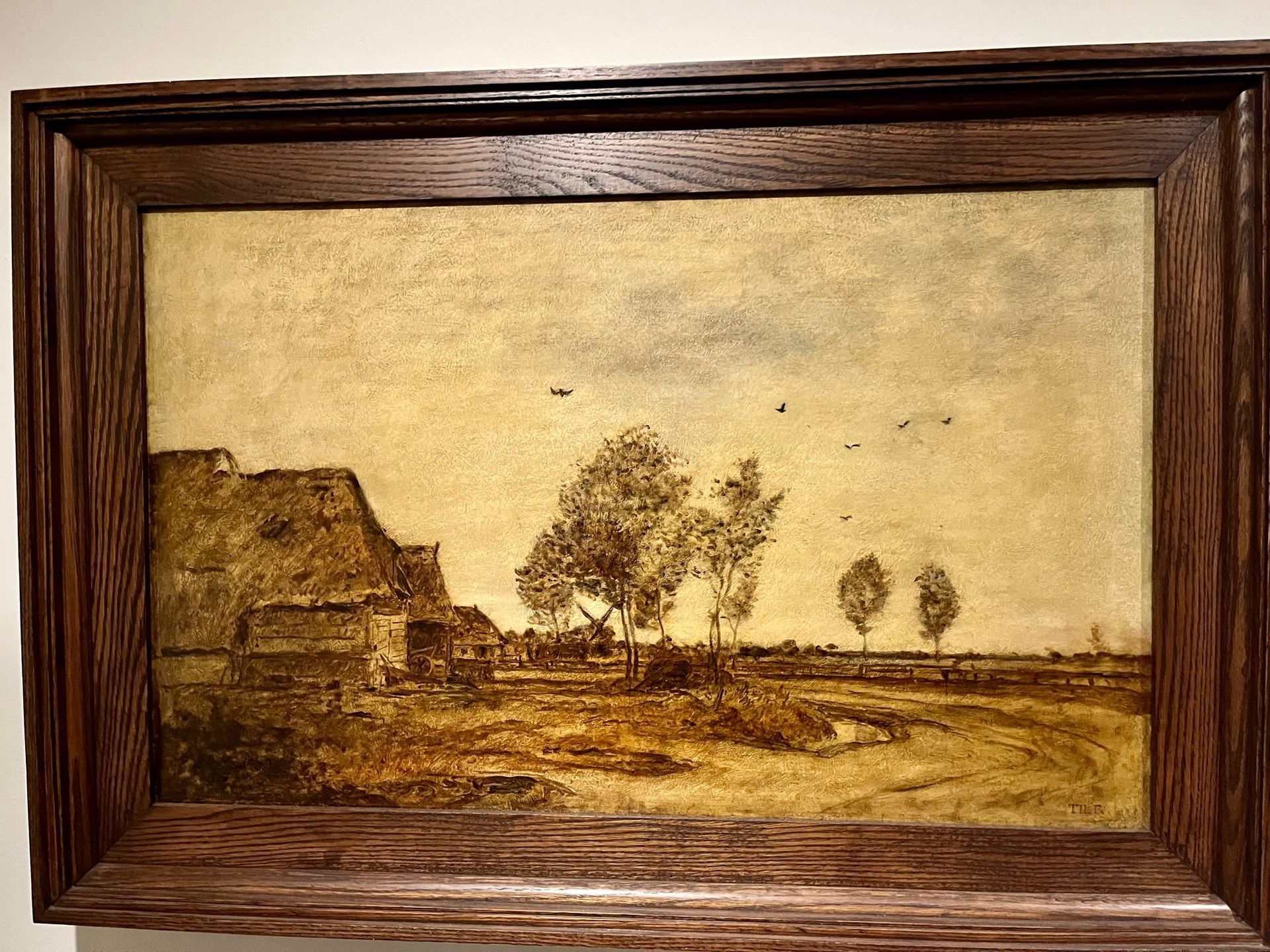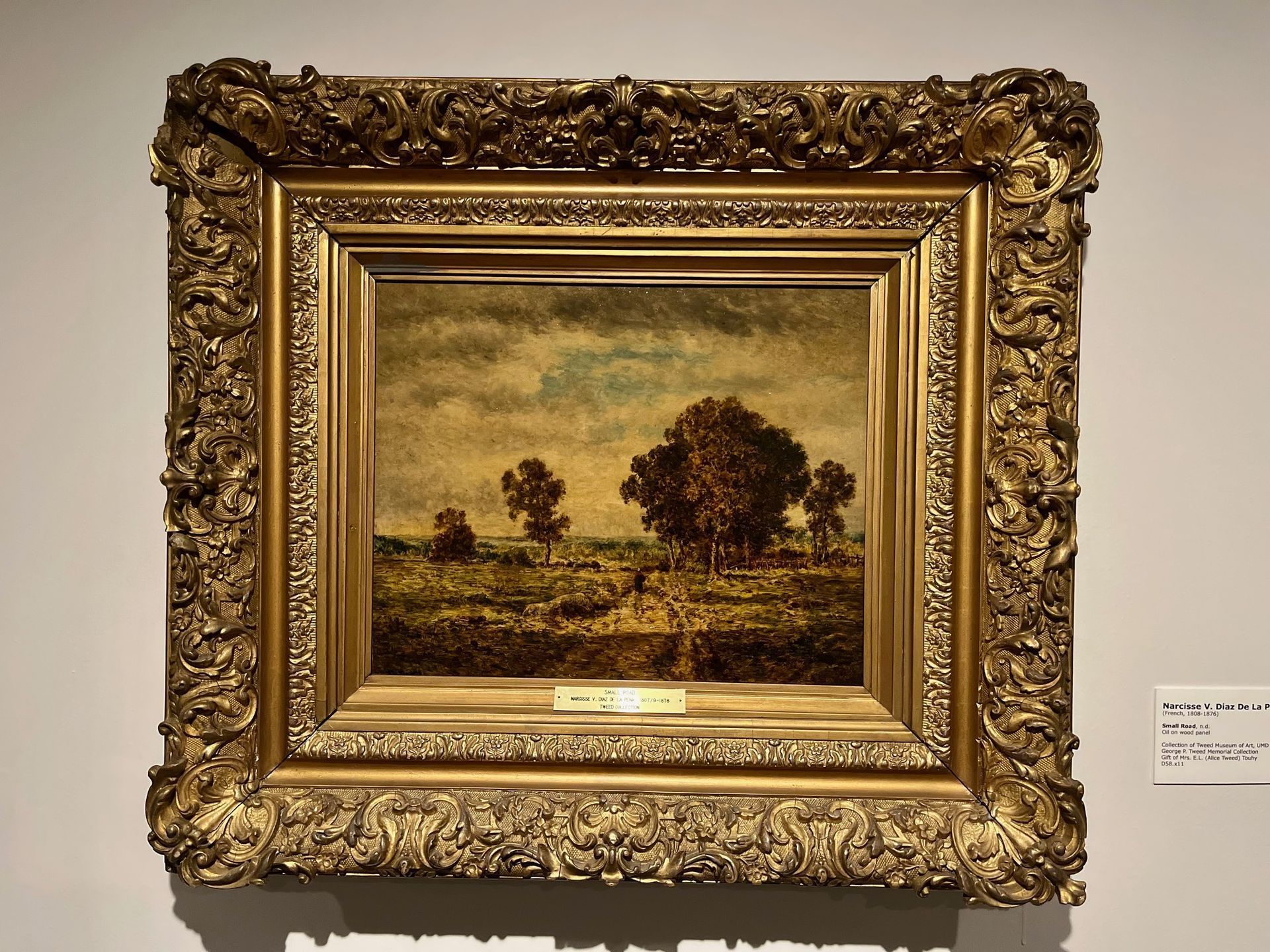their passion for art gave us
the Tweed Museum

FIELD TRIPS
Tweed Museum of Art 🎨
Exploring Duluth, MN
Diggers
Daybook Download🎨 Journey through the humble grace of Jean Francois Millet's "Diggers" at the Tweed Museum, Duluth, MN. A master of Realism and pivotal member of the Barbizon School, Millet's work echoes the dignity of peasant life. Born into such a family himself (1814-1875), Millet proudly portrayed the toil and resilience of rural folks. Millet was the first ever to paint peasants. Notably, he inspired none other than Vincent Van Gogh, who followed in his brushstrokes to also honor peasants in art. Van Gogh began painting peasants after Millet. Millet influenced Van Gogh. Come to witness a pioneering spirit that first cast the everyday heroism of the peasantry in a noble light.
REVIEW
Why did Jean Francois Millet paint pictures of peasants?
Landscape with Bridge
🌉 Discover the serene "Landscape with Bridge" by Henri-Joseph Harpignies. A Realist landscape maestro and member of the Barbizon School, Harpignies (1819-1916) transports viewers into nature's tranquil embrace. Despite his wealthy family's industrial ties to a sugar beet factory, Harpignies' art resonates with the organic simplicity of France's countryside.
REVIEW
What art school was Henri-Joseph Harpignies a part of?
The Three Friends
🐐 "The Three Friends" awaits your gaze at the Tweed Museum, Duluth, MN. Crafted by Charles Emile Jacque, 1813-1894 France, a Realism virtuoso, this depiction of natural landscapes and animal camaraderie hails from the esteemed Barbizon School. Despite his self-taught beginnings and his service in the military—a stark contrast to his wealthy peers who could afford to avoid it—Self-taught, the family did not have the funds when he was younger for a teacher. His recognition came later after his military service. Young men from wealthy families often pay for a replacement for military service. Where Charles Emile Jacque served as his father was not a wealthy man to pay for a replacement. Military service was seven years. Jacque's talent blossomed. He was a friend to Millet, and once an illustrator and caricaturist, Jacque's journey to recognition is as compelling as his art. Experience the depth of friendship and rustic charm through his eyes.
REVIEW
How did Charles Emile Jacque learn to become an artist?
where nature's beauty
speaks volumes

Cow in Landscape
🌿🐄 Step into the pastoral serenity with "Cow in Landscape" by Constant Troyon,
1810-1865 France. A Realism connoisseur and eminent member of the Barbizon School, Painter of Animals, Troyon's canvas brings the noble beast of the fields to the fore. His brush strokes, honed at the prestigious Royal China Works of Sèvres, earned him acclaim and rewards beyond many of his contemporaries. Once at the pinnacle as a modern French artist, Troyon's dedication to the bucolic splendors, though waned in the public interest, remains a testament to his mastery. He started as the first rank modern French artist, but his interest declined because the public became less interested in rural farm animals. Experience the tranquil harmony of rural life through his eyes.
REVIEW
Why did interest in Constant Troyon's paintings decline, even though he was once a highly rewarded artist?
Henri Mattise
🎨🐱 Immerse in the vibrant world of Henri Matisse, a maestro of modern art, known for his love of felines and bold, joyous colors. Matisse's mornings were often shared with his beloved cats and a slice of buttered bread, leading to cozy painting sessions with his furry friends in bed. The pioneer of Fauvism, a movement named for 'Les Fauves' or 'wild beasts', Matisse, alongside Andre Derain, embraced the vivid hues, influenced by bright colors, that echoed Van Gogh's intensity. A former lawyer turned iconic artist in his 20s, Matisse found his calling with a paint set from his mother during an illness. In his later years, as his eyesight waned, he innovated the art of 'painting with scissors', crafting large-scale paper collages that he meticulously arranged on his walls. Celebrate the genius who cut into color with the same fervor he once brushed it on canvas.
REVIEW
What is Fauvism, and who were the leading artists behind this movement?
Pablo Picasso
🎨✨ Step into the revolutionary strokes of Pablo Picasso, a prodigy who painted his first masterpiece at 9, a bullfighter, and debuted at an art show by 13. His life was a canvas of innovation, from his very first word 'lapiz' (spanish for pencil) to his daring explorations in texture, blending plaster, sand, and even newsprint into his work. Alongside Georges Braque, Picasso shattered traditional perspectives with Cubism, presenting a fragmented reality on canvas. Picasso and Georges Braque developed Cubism, showing objects from multiple angles simultaneously. Despite facing absurd suspicions like the theft of the Mona Lisa, Picasso's legacy as an artist and friend to the likes of Matisse remains unblemished. Embodying the belief that "Every child is an artist," Picasso's life reminds us of the innate creativity within us all.
REVIEW
What unusual materials did Picasso use in his paintings to create texture?
experience and find a moment of reflection in the quietude

Alice & George Tweed
🖼️✨ This visionary couple not only funded the establishment of this cultural haven but also enriched it with exquisite pieces like Millet's "Diggers." Their investment in Minnesota's Iron Range mines reflects their broader commitment to growth and development. As avid collectors, the Tweeds played a pivotal role in the transatlantic journey of European art to U.S. shores, amassing a treasure trove of 19th-century European and American art. At that time, European art was often sold to U.S. collectors and the Tweeds were a part of it. The collection by the Tweed consisted of 19th century European and American artThanks to the Tweeds, we can journey through history with every piece in their diverse and storied collection.
REVIEW
What kinds of art did the Tweeds collect for their museum, and why is their collection important?
The Uphill Road
🛤️🎨 Traverse "The Uphill Road" at the Tweed Museum, Duluth, MN, and witness a journey through Jean-Baptiste-Camille Corot's vision. A stalwart of Realism and a pioneer from the Barbizon School of Arts, Corot (1796-1875) captures the essence of France's landscape with a poetic tranquility. His delicate play of light and shadow invites contemplation, leading viewers on a serene ascent. Step into the world of a master who taught us to find beauty in the climb.
REVIEW
What is unique about Corot's painting style, especially in his landscapes?
November
🍂✨ Embrace the autumnal spirit with "November," a captivating work by Théodore Rousseau, nestled in the collection of the Tweed Museum, Duluth, MN. As a key figure of Realism and the Barbizon School of Arts, Rousseau's (1812-1867) portrayal of the French landscape is as raw as it is romantic. His brush invites you to wander through the fall's russet tones and the subtle hints of winter's approach.
REVIEW
How does Rousseau's painting "November" capture the essence of the autumn season?
where art and storytelling intertwine

Small Road
🛣️🌿 Stroll down the "Small Road" at the Tweed Museum, where the brushwork of Narcisse Virgilio Diaz de la Peña invites you on an intimate journey. As a celebrated Realist and member of the Barbizon School of Arts, Diaz de la Peña (1808-1876) crafted scenes that speak to the heart of France's natural beauty. This particular path, while small, offers a vast experience of contemplation and serenity.
REVIEW
What does Diaz de la Peña’s painting "Small Road" reveal about his approach to depicting nature?
Tale of the Bamboo Cutter
🌙✨ A student's interpretation of the 17th-century Japanese "Tale of the Bamboo Cutter" has graced the galleries, bringing to life the enchanting narrative of a celestial maiden discovered within luminous bamboo. The narrative depicts a baby found in glowing bamboo stalks by a bamboo cutter. This story, of a woman whose beauty captivates even the emperor and whose origin lies in the moon's mystical embrace, captures the imagination. She reveals she is from the moon and will return. While the original scrolls, 1652-1724 by Hanabusa Itchō reside at the Metropolitan Museum of Art, this student work invites a new appreciation of the timeless tale.
REVIEW
Who originally illustrated the "Tale of the Bamboo Cutter," and where can you find these scrolls?
Kathryn A. Martin Library
📚💡 Step into the world of knowledge and art at the Kathryn A. Martin Library on the UMD Campus. Down the hall from the esteemed Tweed Museum of Art, the library's front entry boasts an enchanting "Clear and Silver Chandelier" by the renowned abstract expressionist Dale Chihuly. This handblown glass sculpture, with its intricate floral forms cascading from above, is a testament to Chihuly's unique inspiration drawn from the vivid memories of nature and sea of his youth. It's a shimmering invitation to explore the depths of both literature and art in one inspiring space.
REVIEW
What childhood memories influence Dale Chihuly's artwork?
explore the depths of
literature and art

The information on this website or books for Amy Monroe Author is not intended or implied to be a substitute for primary education or for professional medical advice, diagnosis, or treatment. All content, including text, graphics, images, and information contained in or available through her books, daybooks, website, or social media, are for general information purposes only. Amy Monroe makes no representation and assumes no responsibility for the accuracy of the information contained in or available through her books or website. Such information is subject to change without notice. You are encouraged to confirm any information obtained from or through her books and website with other sources and review all information regarding any medical condition or treatment with your physician. All artwork is copyrighted and property of Amy Monroe. Unauthorized use is prohibited.


